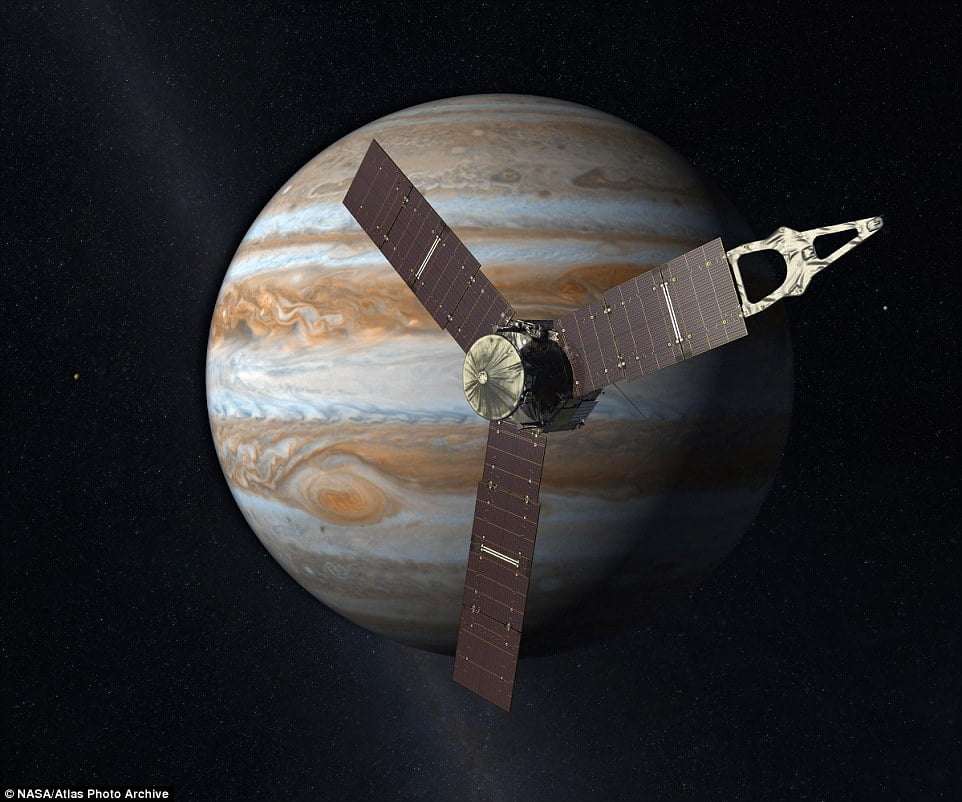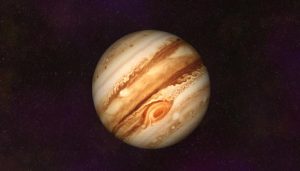After a five-year trip covering nearly two billion miles in outer space, NASA’s Juno spacecraft finally went into orbit around Jupiter on July 4th — and Professor Ravit Helled of Tel Aviv University’s Department of Geosciences played a major role in getting it there.
Helled, an astrophysicist and planetary scientist, joined the Juno science team in 2008. Her Juno research will specialize in Jupiter’s internal structure and interior formation.
SEE ALSO: Life on Mars? Israelis Design 3D-Printed Space Home For NASA
On July 4th, Juno slowed down just enough to be pulled into the orbit of the giant planet Jupiter. A spinning, robotic probe as wide as a basketball court, Juno will circle Jupiter 37 times for 20 months, observing the gas giant from its polar orbit, some 3,000 miles above its dense clouds.
On July 19, Juno already beamed back more than 1,300 raw images it took as it made its final approach to Jupiter. It is the first spacecraft to orbit Jupiter since Galileo, which deliberately crashed into Jupiter in September 2003.
Clues to the origins of the solar system
Jupiter and the gaseous planet’s four largest moons — Io, Europa, Ganymede, and Callisto — have been the subject of fascination for centuries. It was the first planet to form and holds vital clues as to how our solar system formed and evolved. The Juno mission will help scientists understand planetary systems in other parts of the universe as well.
SEE ALSO: SpaceIL’s Mission To The Moon Says Its Chances Of Winning Google Lunar XPrize Are High
Sign up for our free weekly newsletter
Subscribe“Jupiter is a very mysterious planet,” Helled said in a statement. “It is huge, has no solid surface, has strong winds and magnetic fields, and we don’t know exactly what it is made of.”
Spacecraft have flown to Jupiter before, but none were equipped with the advanced technology and instruments on board Juno, instruments that will offer insight into the planet’s origins, structure, atmosphere, and magnetosphere.
New images of Jupiter
Upon its approach, Juno shot a video of Jupiter’s moons traveling around the planet, capturing the first “live” footage of the movement of objects around a celestial body. The JunoCam is poised to take “spectacular close-up, color images” of Jupiter that, according to NASA, will unlock the secrets of the giant planet. Does it have a solid core? What lies beneath its dense clouds? How much water is in its atmosphere? How deep is that giant red spot?
“Juno just started to orbit Jupiter, so it will take at least a few weeks to get initial results,” Helled said. “I am most eager to receive information on Jupiter’s gravitational field — this can then be used to constrain its density profile, and therefore describe its composition. I want to know if Jupiter has a core, so we can better understand how giant planets form.
The Juno mission ends on February 20, 2018, when Juno is expected to crash into Jupiter.
Photos & Videos: NASA, Tel Aviv University
Related posts

Editors’ & Readers’ Choice: 10 Favorite NoCamels Articles

Forward Facing: What Does The Future Hold For Israeli High-Tech?

Impact Innovation: Israeli Startups That Could Shape Our Future






Facebook comments